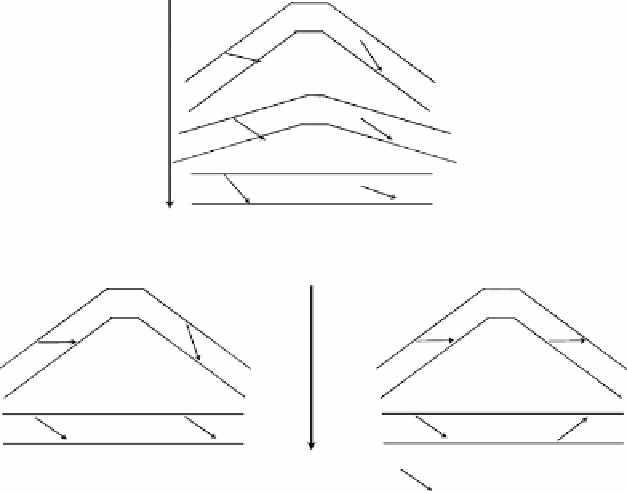Geology Reference
In-Depth Information
3.2.4
Tests to Constrain the Age of Remanence
Once the stable remanence has been isolated in a paleomagnetic sample, it
is important to check if the age of the remanence is primary. It is, unfortu-
nately, not uncommon for an ancient magnetization isolated by demagne-
tization to have been acquired long after the sedimentary rock was
deposited. The most important test to constrain the age of remanence is
the paleomagnetic fold test (Graham 1949). The magnetizations isolated
by demagnetization from samples collected on both limbs of a fold are
compared in their
in situ
orientation and also after the beds have been
“unfolded” and are mathematically reoriented to be flat-lying. If the
magnetizations are better clustered after the beds have been “unfolded,” the
magnetization passes the fold test and was acquired before the folding.
Passage of the fold test does not guarantee that the magnetization is pri-
mary, i.e., as old as the rock is, but it does prove that the magnetization is at
least ancient and likely to be primary (Figure 3.3). Soft-sediment folds that
formed before the sediment was lithified can be used for a fold test and
constrain the magnetization to be nearly as old as the rock.
Of course, if the magnetization fails the fold test, it was acquired after
folding and is a secondary remagnetization. Statistical tests are used to
determine at what level of confidence the scatter of magnetizations can
be considered to be pre- or postfolding in age (e.g., McElhinny 1964;
McFadden & Jones 1981).
Figure 3.3
Paleomagnetic fold
test. The arrows show the mean
paleomagnetic magnetization
direction in each limb of the
fold. (a) The special case when
the magnetization is best
clustered as the beds are being
“unfolded” and indicates a
magnetization that was
acquired during folding or has
been rotated at the grain scale
by strain. (b) The geometry
of magnetizations that were
acquired before folding
(prefolding). (c) The failure
of the fold test when the
magnetization was acquired
after folding. Source: Kodama
2012. Reproduced with
permission of John Wiley &
Sons.
(a)
Syn-folding
Unfolding
Best clustering
of magnetization
(b)
(c)
Best clustering
of magnetization
Pre-folding
Post-folding
Best clustering
of magnetization
Unfolding
Mean limb magnetization


